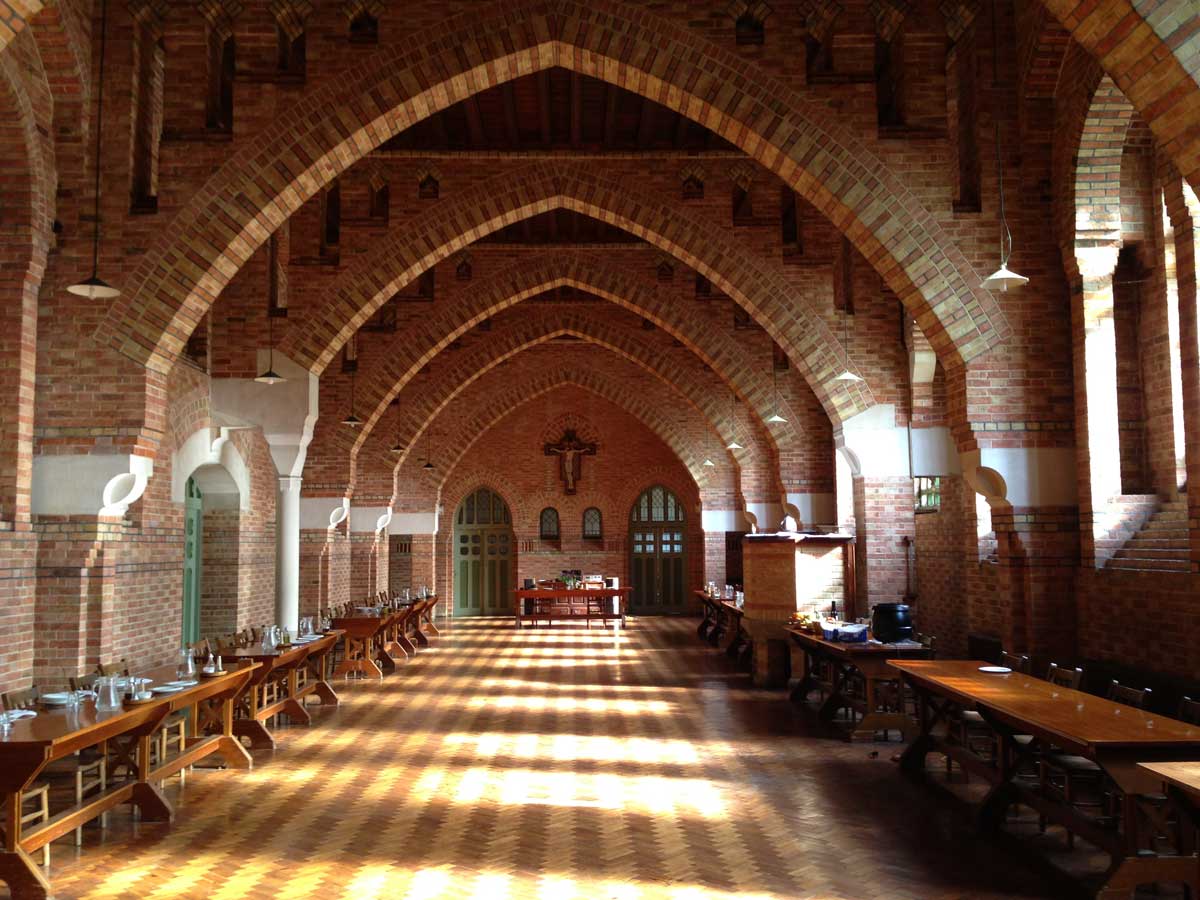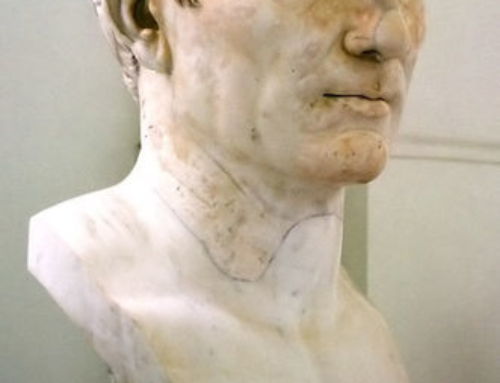I was a curate (parochial vicar) in the Church of England in the late 80s when an older priest introduced me to the Isle of Wight. The island is a beautiful, little known corner of England that is delightfully behind the times. Opposite the port of Portsmouth, just off the Southern coast of the English mainland, the island is separated by a five mile wide body of water called the Solent.
The Isle of Wight is a diamond shaped island about seven miles by fourteen. I went with my friend to help conduct a parish mission, and while there he took me to visit Quarr Abbey. Quarr is a Benedictine Abbey of the Solesmes congregation in France. During the third republic the French repressed the religious orders and around 1902 the monks from the Abbey of Solesmes fled to England and found refuge on the Isle of Wight. Eventually they bought land on the North coast of the Island next to the ruins of a Cistercian monastery. Not knowing if they would ever be able to return to France, they started monastic life in a large house on the property and began to build their monastery.
One of their number, Dom Paul Bellot, was an architect and he designed the new monastery and it’s amazing church. The unusual architecture is a combination of Gothic, Moorish and Byzantine–being built in the same time period as the Basilica of St Therese in Lisieux and Sacre Coeur in Paris–both of which also weave in Byzantine and Moorish influences. Built in Flemish brick, the building is both austere and monastic yet warm and gentle.
Better than the building, though, is the Benedictine monastic life. There are only a few monks there now, but they maintain the liturgy and welcome visitors in Benedictine style. The monastery is important to me because, after my first visit I returned to make my retreat. Before I left a parishioner gave me a rosary and suggested I learn to use it. I was still and Anglican priest at the time and biased against devotion to our Blessed Mother. However, as I got to Quarr I thought, “Why should I be right and a billion Catholics be wrong?” I got a book on how to pray the rosary and got started. As I did a whole new aspect of prayer opened in my life.
At that time I was going through an inner crisis and some months later after counselling my spiritual director said, “Our Lady’s prayers have done so much for you haven’t they?” He didn’t know that I had started the rosary just when things began to crumble around me. Then my eyes were opened. It was the prayers of Our Lady that had helped me through the crisis. Since then the rosary and Quarr Abbey have been one of the center points of my life.
It was largely due to the desire to be near Quarr that I accepted a post as an Anglican vicar on the Isle of Wight. For five years I served as vicar of Brading with Yaverland. I spent a lot of time at Quarr and when I announced my engagement the Abbot of Quarr expressed his surprise, “We all thought you would be coming here to join us!” It was on the Isle of Wight that we decided to leave the Anglican Church and it was at Quarr in February of 1995 that we were received into the fold of the One, Holy, Catholic and Apostolic Church.
A lot has happened since then, but I’ve kept links with Quarr Abbey and went there a few summers ago to research and write Letters on Liturgy. If you are reading this and sense that you may have a monastic vocation, Quarr Abbey is a wonderful place–a very spiritual location where heaven and earth connect. Pay a visit.
The picture illustrating this post is of the monastic refectory. Go here to visit Quarr Abbey website.







Thank you for sharing this part of your story Fr. I like the combination of austere yet gentle…definitely a place worth checking out. 😀
Being recently retired, I will consider this for my bucket list (once the virus dies off). Nice little story. Thanks Fr. Longenecker